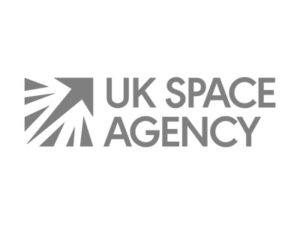Lacuna Space puts another IoT Gateway in space
Backed by the European and UK Space Agencies, the shoebox sized satellite joins the Lacuna satellite network today. Connecting small, low power devices everywhere around the world.
3 November 2020
Lacuna Space adds the latest satellite to its demonstration constellation for the Internet-of-Things (IoT). The company completed in-orbit tests today, after being launched on the 28th September into low earth orbit, at about 500 km above Earth. The satellite payload and mission is essentially a modified IoT Gateway in space, built by Lacuna Space. The IoT Gateway allows to connect ‘things’, such as sensors, with the internet in remote areas where conventional connectivity is not commercially viable.
According to Lacuna Space CEO, Rob Spurrett, this satellite will greatly boost the Lacuna network capacity and extend customer trials to additional market segments. Examples for applications include predictive maintenance and tracking of heavy machinery in remote areas. Automating the dispatch of replacement parts, scheduling resources where needed and minimising down time.
“We now have various demonstrations for using our services from wildlife management in remote areas of New Zealand and national parks in Kenya, to managing the environmental impact of construction sites in the UK.”
“It is great to announce another successfully commissioned satellite on our path to the full constellation. Our plans have been somewhat delayed by the COVID-19 pandemic but despite the challenging times, we were able to proceed and this latest mission entered the network in under 10 months from Lacuna Space placing the satellite order. Now, as the launch back-log is flowing again, we are expecting several additions to the demonstration network in the near future.”
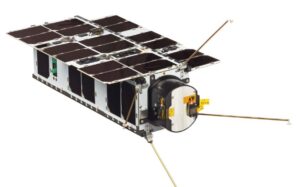

Lacuna Space recognised that satellites could provide an essential role in extending the connectivity of ‘things’ to remote areas where conventional connectivity is not commercially viable, and power is a scarce resource. Using specially adapted Low-Power Wide Area Network protocols (LPWAN), Lacuna sensors are smaller than the palm of a hand, and can connect over satellite for several years off a single battery charge.
Lacuna Space has led the way, developing its concept during its period in the ESA Business Incubation Centre at Harwell in the UK and then developing low-cost satellites to demonstrate its capability and viability, with support from the European Space Agency and the UK Space Agency.
Carlo Elia, Head of the Telecommunications Technologies, Products and Systems Department at ESA, said:
“ESA is proud to help European companies to develop innovative satellites, technologies and services for the global commercial market, particularly in the newspace domain. The ESA telecommunications directorate has supported Lacuna Space since it started in the ESA business incubator centre in Harwell, during which time Lacuna Space has demonstrated the capability of small cubesats to support internet-of-things services.”
“It is great to see the company going from strength to strength with this latest launch and start of operations.”
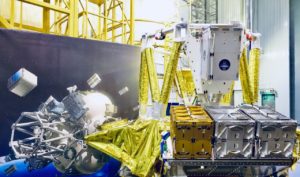
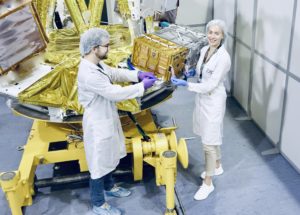
The satellite platform and initial operations have been supplied by nanosatellite integrator NanoAvionics and the antenna by Oxford Space Systems, also located in Harwell.
Catherine Mealing-Jones, Director of Growth at the UK Space Agency, said:
“Space is a fundamental part of our everyday lives. The UK space sector is leading the way in putting pioneering technologies – from satellite communications to 5G – at the heart of the essential products and services we all rely on.”
“This exciting venture is yet another example of the success stories that have been made possible by the support mechanisms that exist around the cluster of excellence at Harwell – bringing together companies that can work together to unleash the potential of the UK space sector.”

About Lacuna Space
Lacuna Space, located in the United Kingdom and The Netherlands, provides low-cost, easy and reliable global connections to sensors and mobile equipment. The company provides an ultra-low power tracking and connectivity service for short data messaging based on open source LPWAN protocols, that is ubiquitous. The service works everywhere, enabling companies to gather data from remote sensors or tracking the status of moving assets. For more information, visit www.lacuna.space or follow us on Linkedin or Twitter.
Press contact:
Harry Pirrwitz
harry@ciceroandfriends.com
+44 (0)73 9252 5980.
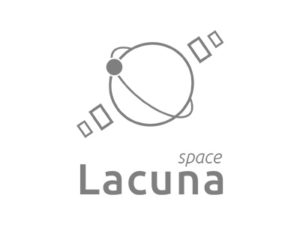
About the European Space Agency
The European Space Agency (ESA) provides Europe’s gateway to space.
ESA is an intergovernmental organisation, created in 1975, with the mission to shape the development of Europe’s space capability and ensure that investment in space delivers benefits to the citizens of Europe and the world.
ESA has 22 Member States: Austria, Belgium, the Czech Republic, Denmark, Estonia, Finland, France, Germany, Greece, Hungary, Ireland, Italy, Luxembourg, the Netherlands, Norway, Poland, Portugal, Romania, Spain, Sweden, Switzerland and the United Kingdom. Slovenia and Latvia are Associate Members.
ESA has established formal cooperation with six Member States of the EU. Canada takes part in some ESA programmes under a Cooperation Agreement.
By coordinating the financial and intellectual resources of its members, ESA can undertake programmes and activities far beyond the scope of any single European country. It is working in particular with the EU on implementing the Galileo and Copernicus programmes as well as with Eumetsat for the development of meteorological missions.
ESA develops the launchers, spacecraft and ground facilities needed to keep Europe at the forefront of global space activities.
Today, it develops and launches satellites for Earth observation, navigation, telecommunications and astronomy, sends probes to the far reaches of the Solar System and cooperates in the human exploration of space. ESA also has a strong applications programme developing services in Earth observation, navigation and telecommunications.
Learn more about ESA at www.esa.int
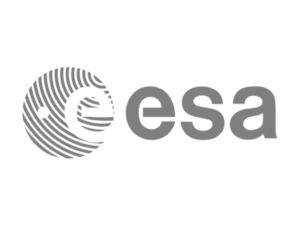
About the UK Space Agency
The UK Space Agency leads the UK’s efforts to explore and benefit from space, with responsibility for all strategic decisions on the UK civil space programme. It ensures Government investments in space science and technology deliver significant value to the UK economy and people’s lives. As set out in the Industrial Strategy, the UK Space Agency works with industry to develop new technologies, infrastructure and services, and to ensure the UK thrives in the commercial space age.
The UK Space Agency:
- Supports the work of the UK space sector at home and abroad, maximising its benefit to the UK’s growing economy.
- Invests in science and exploration to increase our understanding of the universe and deliver practical benefits such as new technologies to life on Earth.
- Inspires the next generation of UK scientists and engineers.
- Provides a safe and supportive regulatory environment for the launch and operation of UK spacecraft, launch operators and UK spaceports.
- Promotes global co-operation in space, through the UK’s membership of the European Space Agency and international partnerships
The UK Space Agency is an executive agency, sponsored by the Department for Business, Energy & Industrial Strategy
You can follow the UK Space agency on social media at @spacegovuk on Facebook , Twitter and Instagram
